A New Normal in Cytotoxic Waste Management
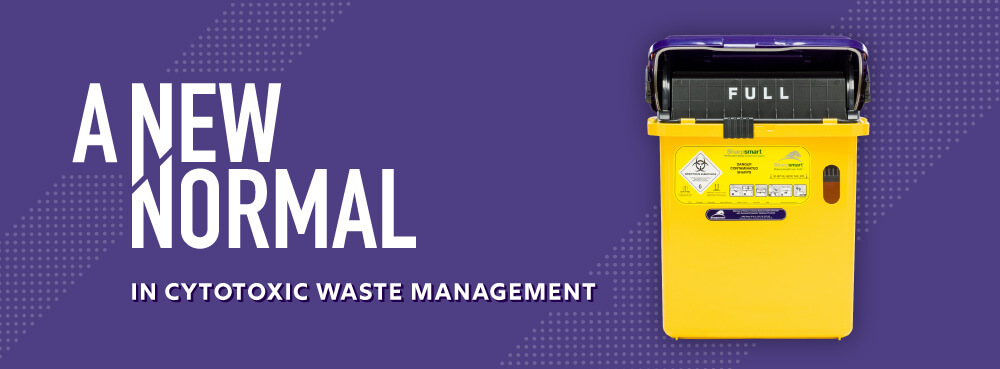
Since the National Health Service (NHS) was formed in the United Kingdom in 1948 there have been significant changes to the way in which waste materials produced by healthcare have been managed. The first key driver for changes in the appropriation of healthcare waste was made in 1971 by the Department of the Environment Report of the Working Party on Refuse Disposal which "Recommended special arrangements need to be made for medical, contaminated or objectionable wastes where practicable should be incinerated on site, together with recommending special arrangements for doctor’s surgeries, health centres and clinics and from home nursing.
Today, with social, legal and environmental considerations as well as deeper controls on different waste types generated in healthcare, it's becoming increasingly critical to make waste management choices that not only protect the environment, but also protect healthcare workers on the front-lines of patient care. Cytotoxic waste, and the management of wastes originating from chemotherapy infusion, is an important waste stream of focus in every NHS facilities' waste management plan.
TOPICS WE WILL COVER:
01 / Risks in the Handling of Cytotoxic Waste
02 / What does Cytotoxic waste handling look like?
03 / Efficiencies of Segregating Cytotoxic waste
04 / How Clinical container design supports improved waste segregation
05 / A New Minimum Benchmark of Safety and Infection Control in Cytotoxic Waste
06 / An Integrated container system designed to reduce spread of infection
Risks in the Handling of Cytotoxic waste
Cytotoxic waste continues to grow in terms of volumes across the United Kingdom and along with it the risk to healthcare workers who are handling and disposing of it on a day to day basis. Decades ago even when it was acceptable that most medications could be flushed down the drain, waste cytotoxic drugs were categorised as hazardous. Why? Because ultimately most chemotherapy drugs are cytotoxic – i.e. they kill cells! Whether in a bulk liquid aqueous form or trace residue, chemotherapy substances are harmful to humans and the environment and need to be managed with strict clinical oversight.
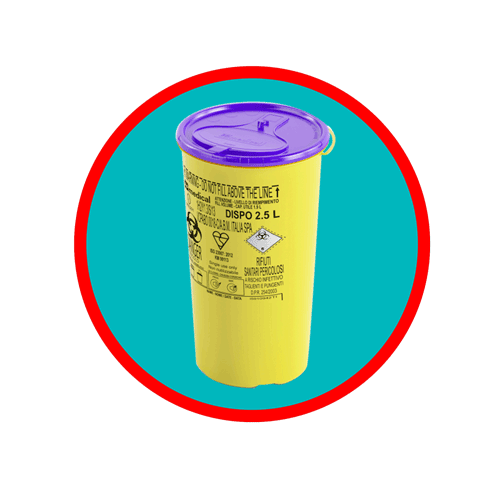
Methodologies and technology to manage and dispose of the waste have virtually remained unchanged in the last 10 years with the continued adoption of disposable containers and, in some cases, cardboard boxes for the collection, transportation and disposal of the infectious waste stream. Beyond the visual image of a cardboard box collecting waste in our living rooms or, in parallel, in an infusion bay… here’s a few clinical pointers why this is simply “not ok”:
- Assembly and disassembly of containers puts clinical and portering staff at risk of infection-transfer
- Cardboard boxes or poorly constructed disposable containers are prone to leakage and infection risk
- Manual tying of bags containing chemotherapy contaminated items incites cross-contamination risk
- The lack of distinction between sharps and soft waste disposal puts clinical staff at risk of needlestick injuries
- In transport, the lack of closure, leakproof seals, and hands-free contact puts downstream service staff at risk
And this is without mentioning environmental impact… one Sharpsmart reusable clinically-designed cytotoxic waste container replaces over 800 disposable plastic containers and 800 plastic bags being sent to landfill!
What does Cytotoxic waste handling look like in the modern clinical era?
For starters… it approaches waste management from a clinical risk perspective rather than a “waste pickup” perspective… what are the safety and infection risks that clinical staff are exposed to? Let’s start there…
Sharpsmart has innovated the world’s first clinically engineered Cytotoxic waste container designed for the clinical environment. And when we say “clinically engineered” we don’t mean that we have taken a mobile garbage bin for household recycling, removed the funky recycling symbol and manufactured it in yellow and purple!!! We mean, a container designed in partnership with clinicians to achieve safety and clinical outcomes in a hospital or cancer centre in the disposal of cytotoxic waste.
- The Sharpsmart Cytotoxic-waste system eliminates the double handling and packaging required with old fashioned disposable containers and delivers efficiencies that will reduce clinical staff and portering staff time in managing and moving waste through the facility.
- Infection Control and Healthcare worker safety are key contributors to managing cytotoxic waste, and the Sharpsmart Chemosmart system provides benefits in both areas,
- Handsfree operation of containers reduces any potential infection transfer and injury risk
- Mobile accessories allow the containers to be as close as possible to the point of generation
- Reusability eliminates labour required to assemble and package for transportation
- Dual containers provide on the spot segregation of contaminated PPE and Sharps, reducing risk for staff handling the waste
Let’s Deep Dive… What Clinical Outcomes do our containers deliver to a healthcare facility?
The CT22 and CT64 containers provide a safe and efficient method for disposing of waste, enabling not only a “no-touch” design that eliminates infection transfer risk but also: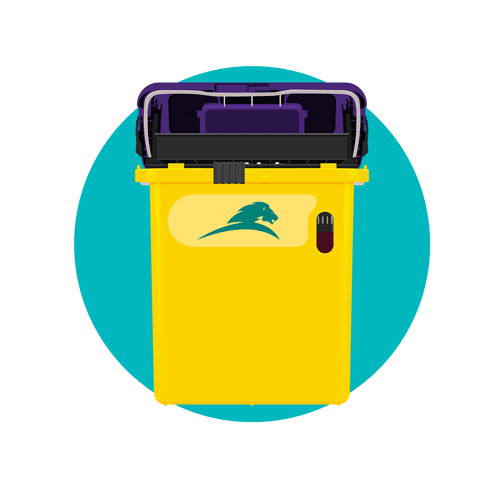
- No bags, no leakage, no cross-contamination
- Secure, tamperproof and lockable container design eliminates unauthorised access to contents
- No-touch design means no manual touching of the container or lifting a lid
- Sensitive activated safety tray eliminates needlestick injury risk
- Stable design minimises tipping risk with supporting accessories that mount the container in place
- Clear colour-coded segregation of the cytotoxic waste stream improves safety and compliance
- Substantial cost savings from the removal of 33% upwards of plastic from the cytotoxic waste stream with reusables
-
After every container fill, our containers undergo an 8-stage robotic washing process that achieves a level of deep clean decontamination and sanitisation 4 times higher than that required by the CDC
Sharpsmart has provided these benefits to a multitude of healthcare facilities across the United Kingdom while delivering substantial waste savings through the elimination of disposable waste containers, reduced disposal risk with cytotoxic and sharps waste disposal at the point of waste generation, and segregation-induced compliance and costs optimisation.
MEET THE GAMECHANGING CONTAINER
Efficiencies of Segregating Cytotoxic waste at Point of Waste Generation
The use of our systems facilitates cytotoxic containers (the CT22 for sharps devices and the CT64 for non-sharp contaminated cytotoxic waste) to be manoeuvred to the point of waste generation, thereby providing an infusion-bay appropriate segregation model for waste generated from cancer treatment. Mounted side-by-side on a mobile apparatus, the Sharpsmart suite of Cytotoxic waste containers cater for waste disposal as follows:
- Sharps with trace amounts (less than 3%) of cytotoxic drug residue to go into a CT22 container
- Soiled PPE, USP800 classified waste, IV bags and tubing or suction cannisters contaminated with trace amounts of cytotoxic waste to be disposed into a CT64 container
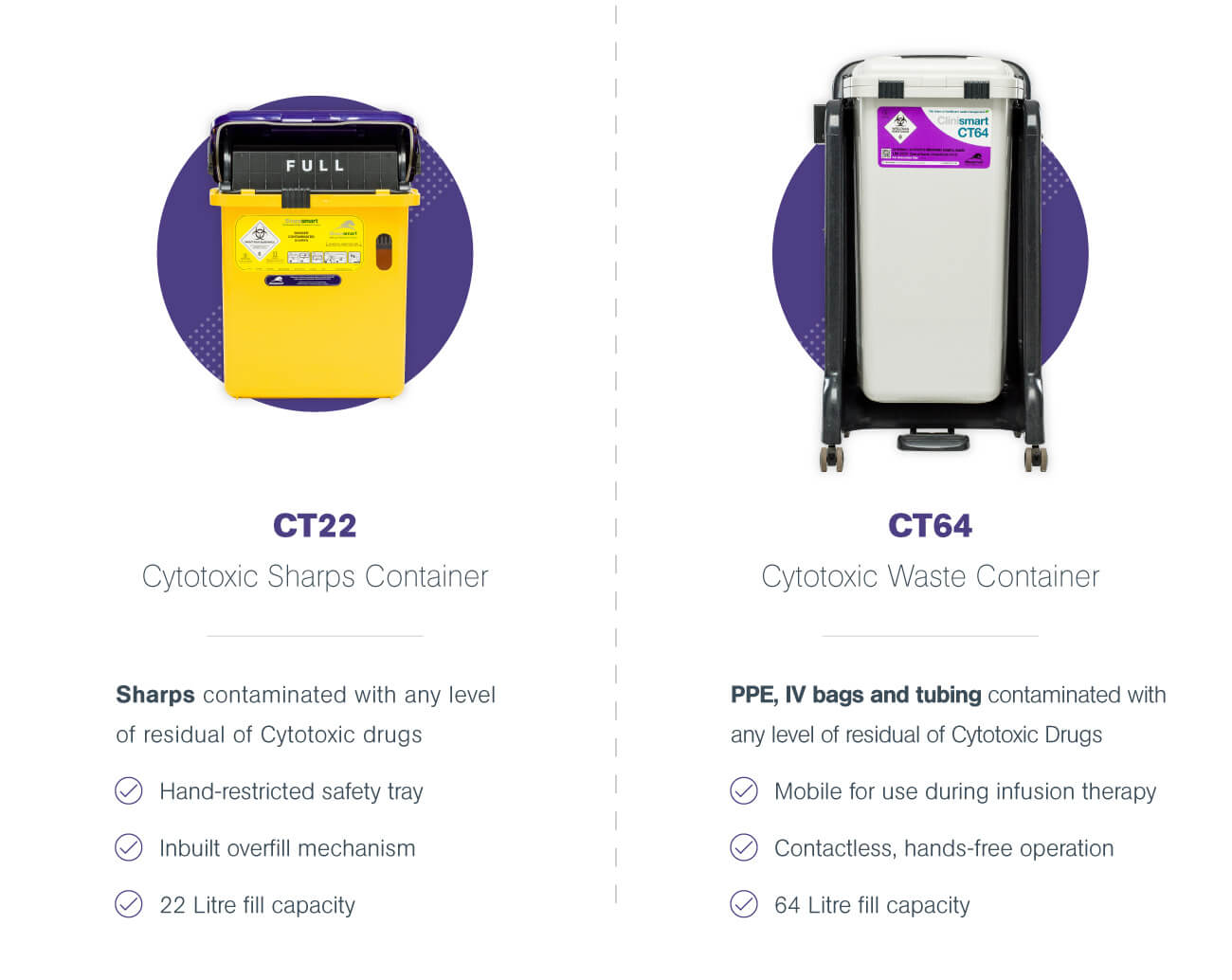
Through the clear point-of-use disposal of both sharps and soft waste into puncture-proof containers at patient bedside or in an infusion bay, the risk of intravenous skin puncture for healthcare workers is dramatically reduced, the temptation to “push more waste into a container” is mitigated via the containers' “maxiumum-fill-level” design, and both clinical and Facilities Management staff are protected in the disposal and decanting of waste, and the movement of containers.
How Clinical Container Design supports improved waste segregation
Beyond the aesthetic appeal of having a clinically appropriate container for waste collection in a patient-care setting, Sharpsmart has proven time and time again that smart container design can support both compliance and waste segregation goals. Some of the aspects of the cytotoxic container designs that encourage more thoughtful waste disposal include: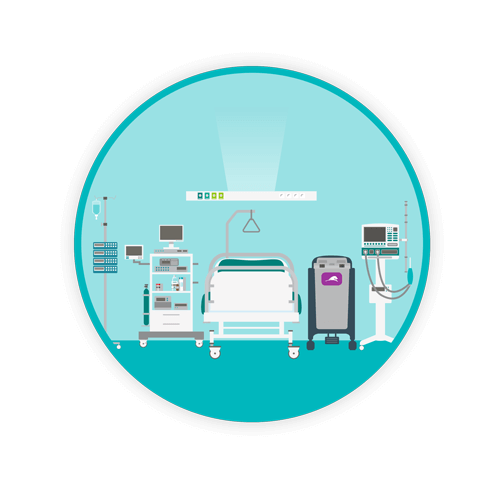
- Lid must be activated by foot pedal to open
- Smaller opening / disposal aperture
- Ability to position the container at point-of-waste generation
- Colour differentiation and clear labelling on the top and base of the container
- Container Design differentiation interrupts habitual mentality of ‘bin = trash’
-
Ability to co-mount containers on a mobile trolley for dual-waste-stream segregation
All of these aspects of the container design force the user to think before act. There is no open lid that you could just throw waste into when passing by, you have to consciously activate the container to use, and visually our containers convey a clinically-engineered device that is fit for a specific purpose. Learn how one hospitals’ use of a Sharpsmart container resulted in a 65% decrease in clinical waste containers.
A New Minimum Benchmark of Safety and Infection Control in Cytotoxic Waste Containment is Needed
Decontamination protocols, infection control and hygiene in an NHS Trust or hospital are largely concentrated on PPE precautions, sterilisation of hospital equipment and hand-washing – and all these things are critical to maintaining a minimum standard of infection control in a healthcare setting. What is not looked at however is hygiene considerations around clinical waste management:
- How often are your containers being cleaned?
- How many times is the waste touched in the waste or bin handling process?
- If located permanently in a patient setting, who is responsible for cleaning bins?
-
Is there a risk of infection spread through spills and cross-contamination from dirty bins?
Cytotoxic and clinical waste bins are often situated in some of the most critical patient areas of a hospital including the ICU or OR’s and yet while everything else in the environment is routinely sterilised – clinical waste bins are overlooked.
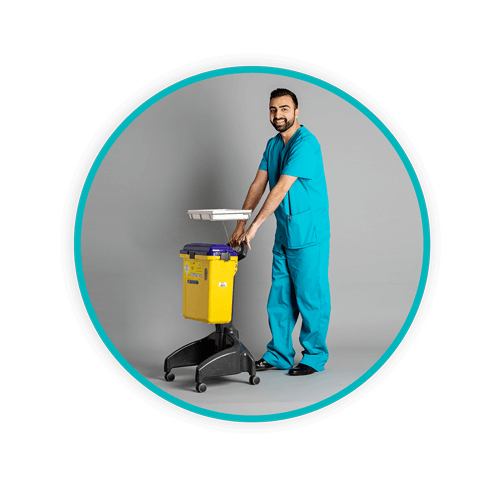
An Integrated container system designed to reduce spread of infection
Our CT22 and CT64 containers are designed not as a “container” but as a system. Sharpsmart’ accessory and logistical solutions ensure the container will never touch the ground (in transport, internal hospital movement or when in position-for-use), each container undergoes a washing and sanitisation process after use that achieves a 106 log bacterial kill, and its interchangeable mounting accessories enable the container to be positioned at point-of-waste generation, eliminating cross-contamination risk.
A New Normal requires a level of cleanliness and hygiene around healthcare waste management that is above and beyond the standard today. We at Sharpsmart are passionate about reforming safety and infection control practices around healthcare waste collection, minimising touches, minimising patient interruptions and minimising risk exposure to frontline healthcare workers. To understand how our clinically engineered containers could take your oncology centre or NHS Trust into a new modern era of cytotoxic waste collection, reach out to us today.
